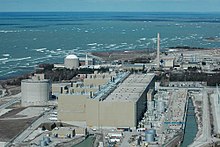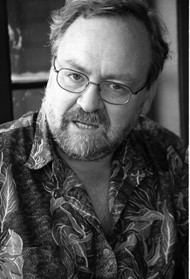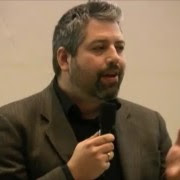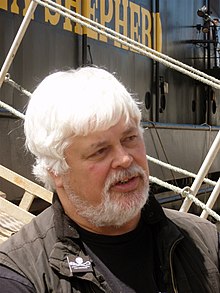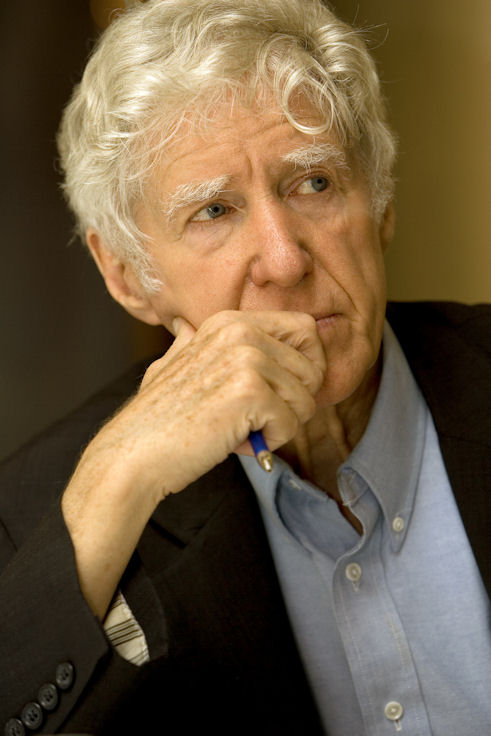Storms in the Emergency Room - Hurricane Sandy, coal & nukes - it's not pretty. From D.C. as storm hits, Earthbeat's Daphne Wysham on the climate connection. From Australia, Greenpeace's Georgina Woods on huge coal expansion. Then a Canadian plan to dump nuclear waste right next to Lake Huron & world's biggest running reactor. Radio Ecoshock 121031 1 hour
Download/listen in CD Quality (54 MB)
Or the faster downloading, lower quality Lo-Fi (14 MB)
MUSIC THIS SHOW: clips from:
".
Or it your prefer ...
Rudd is coming to the Commodore Ballroom in Vancouver on November 16, 2012.
"" (by Craig Anderton)
This one is really about what happens after a big solar flare knocks out the electric grid behind civilization. It's all in the You tube video. I did a Radio Ecoshock feature on this possible catastrophe on November 5th, 2010, 15 minutes of audio here. But this time I played it for the millions without power on the U.S. east coast and Canada, thanks to Hurricane Sandy.
=======================
Welcome to Radio Ecoshock - the world's emergency room. At least that's what it feels like lately, as we begin to taste the high carbon future on Planet Earth.
North Americans are bragging about pumping out more oil from dirtier sources, even as drought kills off the crops, and now a humongous record Hurricane spins up the East Coast. We talk with green radio reporter Daphne Wysham just as the storm hits in the American capital, Washington D.C.
How is the brand new climate spiking these storms with steroids? I'll tell you what top scientists are saying.
At the other end of the world, following fires and floods of their own, the Australians are straining to break their own dismal carbon record. My head hurts trying to understand why such nice people want to double their coal exports. Australia is already the biggest coal exporter in the world, keeping black smokestacks in Japan, Taiwan, China, and now India pouring out more and more carbon dioxide into the overloaded atmosphere. We get the goods down under from Greenpeace Pacific Atmosphere and Energy Campaigner Georgina Woods.
You get to breathe that pollution, and we all get hit with the climate damage.
I'll wrap up with another story with warning sirens all over it. Canada is already building its own "Yucca North" - a porous hole where they'll dump nuclear waste. The best they can do is the worst they can do: the supposed deep geologic deposit is just limestone caves right beside the Great Lakes - up water from millions of people in Chicago, Cleveland, Buffalo, Toronto and Montreal. Brennain Woods of NorthWatch tells us how the aging Bruce Nuclear plant - the largest running nuclear complex on the planet, threatens the whole world.
I'm Alex Smith. Take a deep breath. We're all heading into a state of ecological shock.
SANDY: CLIMATE STORM OF THE CENTURY?
Let's start with the story covered by every network, with the part they leave out: global climate disruption makes deadly and costly storms like Hurricane Sandy much more violent. More than two decades ago, scientists told us this would happen. Now it's here.
How does it work? First, you need to know: we've created far more heat on this planet than we feel on land. The world's great oceans are absorbing more than half the heat held in by greenhouse gases in the atmosphere.
The Gulf Stream, that great ocean current running off North America's East Coast, until it warms Britain and Northern Europe, is heating up.
According to the UK Met Office, the government body measuring such things, there is a huge area off the mid-Atlantic coast that is 2.3 degrees Fahrenheit, or 1.3 degrees hotter than average. That doesn't sound impressive, but that much heat over a giant expanse of ocean is tremendous.
But it gets worse. The Gulf Stream itself is currently 5 degrees Fahrenheit above normal. Hurricane Sandy cruised up this Gulf Stream, gathering up both energy and extra water moisture in her half-continent sized clouds. As meteorologist and former storm chaser Jeff Masters tells us, the Atlantic was unusually warm right to the end of October, making Sandy stronger and wetter.
Did the record amount of open ocean in the Arctic this summer help the Atlantic stay warmer longer? Scientists aren't sure yet. Jennifer Francis of Rutgers, a recent guest on Radio Ecoshock, says the blocking weather in the last two weeks is consistent with what her team observed from the melting of sea ice in the Arctic. Kevin Trenberth of the National Center for Atmosphere Research agrees the Atlantic currents are 5 degrees Fahrenheit warmer than normal, and he attributes 1 degree of that is directly due to global warming. But he doesn't believe the Arctic melt this summer and fall contributed to it. The jury is still out on that - but the vast majority of scientists agree mega-storms like Sandy are more likely to become the new normal, due to climate disruption by human-induced emissions of greenhouse gases.
Of course there are skeptics, some of them well-paid by the fossil fuel lobby.
For example, Patrick J. Michaels of the Cato Institute, who we know has received lots of money from the Koch Brothers and others in the powerful oil and coal lobby, says a storm like Sandy could have happened on a cooling planet as well.
He writes Andy Revkin of the New York Times:
"I predict confidently that we will survive Sandy, which should not be a tropical cyclone at landfall."
Another ploy used by the climate deniers is to find papers showing there were big storms hundreds of thousands or millions of years ago. In many of those cases, carbon dioxide was high then too, and there was a "hothouse" world. And anyway, so what? We're dealing with now, and humans have ramped up the odds of getting a lot of big storms in a short period of time....
Meanwhile, on the ground, what was it like? On Monday night, as the big storm landed in Washington D.C., I spoke with Daphne Wysham. As the cell phone towers swayed, she called for calm.
DID CLIMATE CHANGE MAKE HURRICANE SANDY WORSE?
It's official. Hurricane Sandy is the largest storm ever to have crossed north of Virginia, greater even than the famous Nor’easter of September 1938, known as "The Long Island Express".
The mainstream media is delivering the news while keeping up the great American silence about the role of climate disruption in this unprecedented storm. That's what we're going to talk about with Daphne Wysham, host of the long-running green radio show "Earthbeat" and now a Fellow at the Institute for Policy Studies in Washington.
I reached Daphne in her home in D.C., just as Hurricane Sandy washed ashore on Monday. We talk about what it's like to live it out.
You can find links to Daphne Wysham's article about growing past the pat TV coverage of storms, and our need to be frightened. Instead, we need to look at the deep recurring patterns in these disasters, augments by a warming world. Read that at Firedog Lake here.
Here is another great article by Wysham - the Six Stages of Climate Grief published in the Huffington Post.
With Daphne, I mentioned the recent study by Munich Re - the insurance company that sort of insures smaller insurance company. This is the company that sees the big bills after weather disasters. They report that North America in particular has been hit by violent weather, and they think climate change is a big part of that picture.
Find the Munich Re press release here.
You can read more about it in Elizabeth Kolbert's article in The New Yorker. She's always a good read.
Kolbert writes:
"A couple of weeks ago, Munich Re, one of the world’s largest reinsurance firms, issued a study titled “Severe Weather in North America.” According to the press release that accompanied the report, “Nowhere in the world is the rising number of natural catastrophes more evident than in North America.” The number of what Munich Re refers to as “weather-related loss events,” and what the rest of us would probably call weather-related disasters, has quintupled over the last three decades. While many factors have contributed to this trend, including an increase in the number of people living in flood-prone areas, the report identified global warming as one of the major culprits: “Climate change particularly affects formation of heat-waves, droughts, intense precipitation events, and in the long run most probably also tropical cyclone intensity.”
Another good read: "Climate Change Sandy says to US, 'Take That, Idiots!'" in the Huffington Post.
Daphne and I briefly discuss the on-going argument in scientific circles: did the huge Arctic sea ice melt of 2012 help make Sandy larger? Jennifer Francis of Rutgers says "probably yes" while Kevin Trenberth thinks not. You can find more on that in this blog entry by Joe Romm from Climate Progress.
And check out this article about Kevin Trenberth on warming seas fueling big storms. Trenberth, who I trust, writes:
"The sea surface temperatures along the Atlantic coast have been running at over 3C above normal for a region extending 800km off shore all the way from Florida to Canada. Global warming contributes 0.6C to this. With every degree C, the water holding of the atmosphere goes up 7%, and the moisture provides fuel for the tropical storm, increases its intensity, and magnifies the rainfall by double that amount compared with normal conditions.
Global climate change has contributed to the higher sea surface and ocean temperatures, and a warmer and moister atmosphere, and its effects are in the range of 5 to 10%. Natural variability and weather has provided the perhaps optimal conditions of a hurricane running into extra-tropical conditions to make for a huge intense storm, enhanced by global warming influences."
Andy Revkin's Dot Earth blog has more input from scientists, both pro and con, about the link between Hurricane Sandy and climate change.
Jeff Masters, one of the most dependable storm writers on the Net, at wunderground.com, explains the connection between warming ocean waters and bigger storms in this post.
Jeff writes:
"Sandy to feed off near-record warm waters off the mid-Atlantic coast
During September 2012, ocean temperatures off the mid-Atlantic coast in the 5x10° latitude-longitude box between 35 - 40°N, 65 - 75° W were 2.3°F (1.3°C) above average, according to the UK Met Office. This is the 2nd greatest departure from average for ocean temperatures in this region since reliable ocean temperature measurements began over a century ago (all-time record: 2.0°C above average in September 1947.)
These unusually warm waters have persisted into October, and will enable Sandy to pull more energy from the ocean than a typical October hurricane. The warm waters will also help increase Sandy's rains, since more water vapor will evaporate into the air from a warm ocean. I expect Sandy will dump the heaviest October rains on record over a large swath of the mid-Atlantic and New England.
Hurricane rains and climate change
Hurricanes are expected to dump 20% more rain in their cores by the year 2100, according to modeling studies (Knutson et al., 2010). This occurs since a warmer atmosphere holds more water vapor, which can then condense into heavier rains. Furthermore, the condensation process releases heat energy (latent heat), which invigorates the storm, making its updrafts stronger and creating even more rain. We may already be seeing an increase in rainfall from hurricanes due to a warmer atmosphere.
A 2010 study by Kunkel et al. "Recent increases in U.S. heavy precipitation associated with tropical cyclones", found that although there is no evidence for a long-term increase in North American mainland land-falling tropical cyclones (which include both hurricanes and tropical storms), the number of heavy precipitation events, defined as 1-in-5-year events, more than doubled between 1994 - 2008, compared to the long-term average from 1895 - 2008. As I discussed in a 2011 post "Tropical Storm Lee's flood in Binghamton: was global warming the final straw?", an increase in heavy precipitation events in the 21st Century due to climate change is going to be a big problem for a flood control system designed for the 20th Century's climate.
A lot of us have wondered what it will take to get American politicians and media to finally admit climate change is here, and we need to act fast to salvage a livable climate. Some frustrated scientists and green activists think only a major disaster will force this change in thinking. Apparently the big drought of 2012 didn't do it. Even when the Arctic sea ice melts, that doesn't change our plans to drag even more fossil fuel out of the ground. Do you think Hurricane Sandy will help people wake up to climate disruption?"
During the Republican National Convention, presidential candidate Mitt Romney scoffed at efforts to stop rising seas. Now that the storm surge from Hurricane Sandy is threatening the American North East as never before, Bill McKibben of 350.org suggested Romney might want to rethink that. Find the best Bill McKibben article on Sandy here.
Even if we discount the role of global warming in this particular storm, this is a prime example of what the future will look like, as rising seas contribute ever higher storm surges along the U.S. East Coast.
We're also seeing how small our grid-dependent system becomes, when nature starts to roll out her awesome power. I can picture a future when the U.S. economy, and people around the world, just aren't going to be able to recover from being battered by climate disruption.
Of course, some of the scenes from the East Coast, from closed down transportation to empty food shelves and dark homes, will just fuel the growing myth of a Mayan or Christian end-of-days. There is a risk that mythology will grow instead of public acceptance of climate science.
SHOVEL OUT MORE COAL FROM AUSTRALIA!
You might think humans would learn from disasters like this. Apparently not yet.
Australia suffered a terrible drought for years, ending farming in parts of the country. The Black Saturday bushfires of 2009 killed 173 people. Then torrential rains flooded out coastal cities and towns.
No matter mate. Australia is steaming full ahead to expand their coal exports into world climate-wrecking status equal to Canada's infamous Tar Sands. Here is what you haven't heard.
Let's tune in to what is happening "down under", with Georgina Woods, Senior Climate and Energy Campaigner for Greenpeace Australia Pacific.
[Woods interview]
Australia is already the world's largest exporter of climate-killing coal. When you add up the thermal coal (for electricity and heat) and the coking coal (to make steel) it's been around 300 million tons of coal a year. Australia is keeping Japan going. Japan is a huge coal importer. But Australian coal also powers Taiwan, more of China every year, and now India.
An Indian company GVK Group just bought into one of the biggest coal conglomerates, run by the climate denier billionairess, Gina Rinehart. Rinehart buys newspapers and TV stations, and then installs deniers like Andrew Bolt into prime time. I feel sorry for the Aussies as this coal-powered media creates a big fog about climate change science.
The other big commercial competitor in Australian media is Rupert Murdoch. His Fox News outlets in America continually shout down climate change. It's obvious the Australian media has been polluted by coal smoke.
What shocks me about the rapid expansion of coal and climate denial in Australia. It seems like such an insult to all those who lost their lives in the horrible fires, big floods, and agricultural droughts that have struck Australia time and time again in recent years. How can anyone doubt the climate is changing after all that?
Then we have the simple fact that the Great Barrier Reef, a treasure to Australia and the world, is bleaching and dying mainly due to global warming. Are Australians ready to let these great coral reefs die, to provide more short-term jobs in the coal mining industry?
Apparently: yes! The government and corporations have just announced a giant new coal find inland in Queensland called Galilee.
They want to set up nine new coal mines there. Currently the biggest coal mines in Australia churn out about 30 million tons a year. Just two Galilee coal mines will produce twice that, 60 million tons a year.
Of course they'll need 5 new coal ports to ship it all out. Several of them are located right in the World Heritage Area allegedly protecting the Great Barrier Reef. These coal ships will navigate the coral reefs, and if there is an accident, it all goes into the coral. Blighty!
Greenpeace Australia has just released a new report "Cooking the Climate and Wrecking the Reef". Find it here.
Greenpeace writes:
"If these mines proceed, when they reach maximum production, the emissions from burning the coal would be 705 million tonnes of carbon dioxide per year. If the Galilee Basin were a country, it would be the seventh biggest emitter of carbon dioxide pollution from burning fossil fuels in the world.
And apart from becoming a key driver in global warming, these mines will also exact a terrible cost on farms, water supplies and coastal communities."<br>
If all that Australian coal gets burned, that alone could take the carbon dioxide in the world's atmosphere from the current 394 parts per million, to 550 parts per million. We'd be back to the dinosaur climate, with sea level rise over 100 meters!
Find out more on the Greenpeace campaign to stop the coal disaster in Australia here.
That just can't be allowed to happen. The Australian farmers are gathering up to stop their fields from becoming open pit coal mines. Their alliance is called "Lock the Gate." They are also trying to stop coal seam gas.
Australians are getting used to coal revenues in their economy, and to fund everything from hospitals to opera halls. Meanwhile, they can kiss the Great Barrier Reef goodbye, and get ready for the fires and floods to come, produced by that very same coal. It's a dirty business. Australia has limitless solar energy - time to convert to clean, mates!
CANADA'S DIRTY SECRET: MAKING "YUCCA NORTH" TO STORE NUCLEAR WASTE - RIGHT ON LAKE HURON!
We started out this program with sirens wailing, as Nature is wheeled into the emergency room. We'll go back to Canada, to Ontario, where nuclear madness is in full bloom. It's only a matter of time until the Great Lakes are irradiated, with millions of people downstream and downwind. And the radioactive trucks are already rolling down the public highways all over North America.
They are calling it "Yucca Mountain North" except it's even worse than that. Canada's most populous Province of Ontario has a dangerous plan to bury radioactive waste from 20 giant nuclear power plants. They want to toss it in limestone caverns right beside one of the Great Lakes. We've reached Brennain Lloyd of the non-profit group "Northwatch" to find out more.
Bruce Nuclear Power station, Ontario Canada.
A publicly-owned Crown Corporation of the Province of Ontario wants to build a "deep geologic repository" right beside the Bruce Power nuclear complex. They are proposing a relatively shallow set of caves - in limestone! That's not like granite or even salt. Limestone is relatively porous.
There is already a waste storage facility there. Now they want to truck in all the "low-level" and "intermediate level" waste from Ontario's 20 reactors. "Intermediate level" is still highly radioactive. It's just everything except the nuclear fuel rods themselves. So it might include things like the filters used to gather radionuclides from the cooling pools. Or parts of old or refurbished reactors. It's very hot stuff.
All of this will just go into limestone caves in their original shipping containers. That's not much protection for the millions and millions of people who live down-lake and downstream in the Great Lakes.
People in Michigan and even Illinois (listening Chicago) could find their water radioactive after a leak. Ditto for the whole Great Lakes coast of Ohio, Pennsylvania, and New York State (Cleveland, Buffalo). On the Canadian side, the millions living in Toronto and Montreal are downstream. It's super risky, and hardly known to the world.
The Bruce Power nuclear power station is scary enough by itself. Two of the reactors were shut down for safety reasons for 17 years. Now they are back online, after being refurbished, making eight reactors running. That is supposedly the largest number of reactors in a single site anywhere in the world. The design for these Candu reactors is straight out of the 1960's. They've had problems, and then more problems, all along. Why is Ontario still counting on these antiques for nuclear power, after what we saw at Fukushima? It is crazy.
Brennain Lloyd tells us the Province of Ontario, the most populous in Canada, has plenty of alternative energy projects on the go. One of the world's largest solar power facilities just opened in Ontario. Some of those green projects are stopped by the giant subsidies governments pour into these old reactors. Just think what those billions of dollars could go with alternative energy.
[Brennain interview]
I lived in Ontario for years. We were always nervous one of these plants was going to go. The Candu reactors were designed in the 1960's and haven't changed since. The giant Pickering reactor sits right beside the millions of people living in Toronto. It’s been plagued with problems and shutdowns. The Darlington Reactor complex was upwind from my country retreat. You couldn't get away from nuclear worry. I had to move away from all that.
Find out more, and how to help stop this nuclear madness here.
And read this fantastic article "Deep trouble: Nuclear waste burial in the Great Lakes basin", published: Friday, October 12, 2012 by Jim Block, reporter for "the Voice" "Serving northern Macomb & St. Clair counties".
It will curl your hair.
NO TIME FOR DESPAIR
So Hurricane Sandy is just a metaphor for our current condition, to the state we are in. Right now, we are the storm. Someday, when the black clouds clear, maybe we'll all be the rainbow. Don't despair. We need you, each and every one.
One mind awake can become stronger than a thousand zombies sleepwalking in a dying civilization.
I'm Alex Smith. Thank you for listening to Radio Ecoshock, and thank you - really - for caring about your world.

